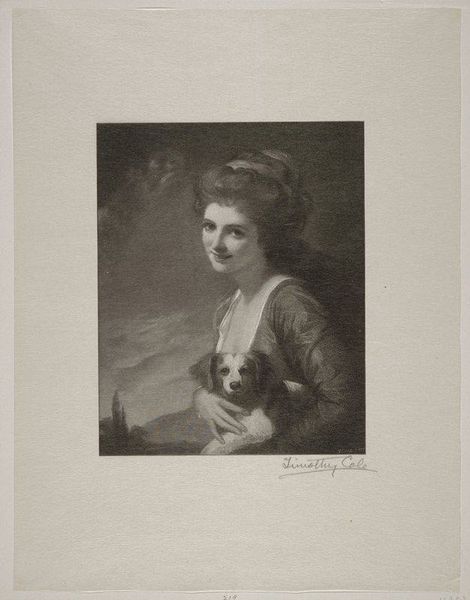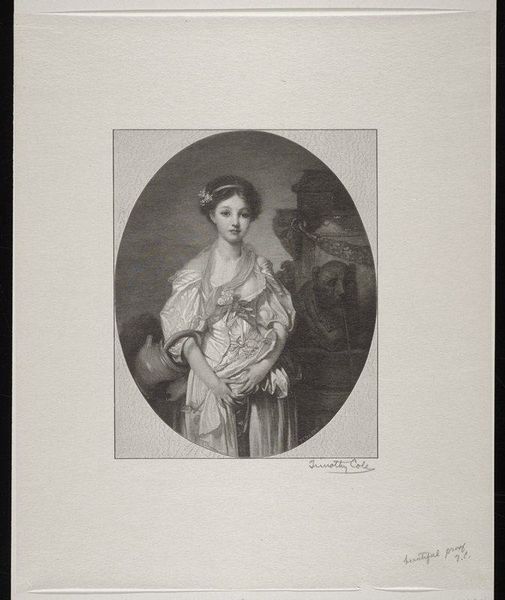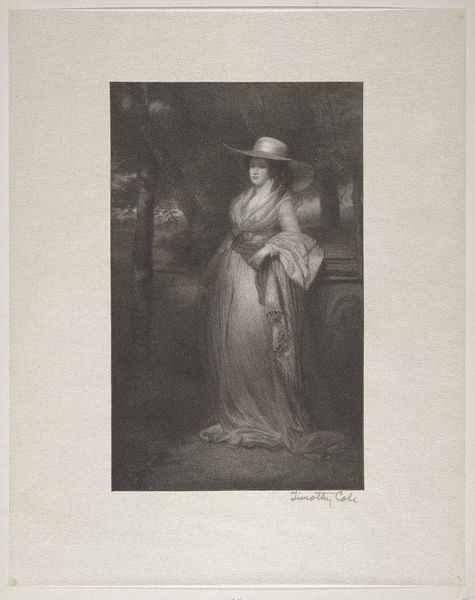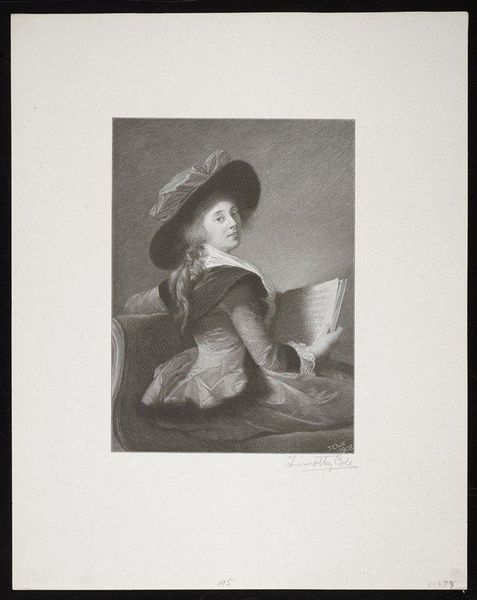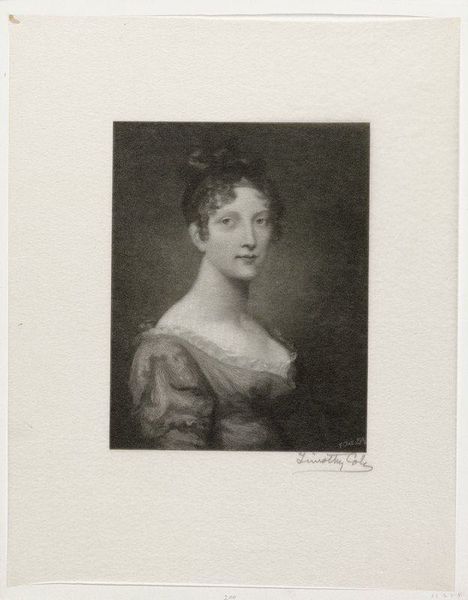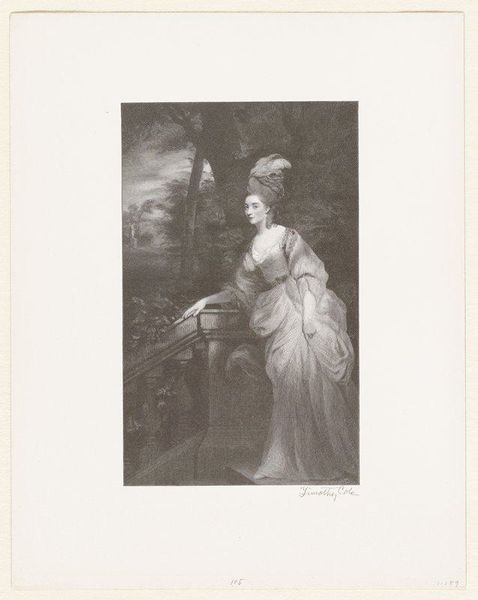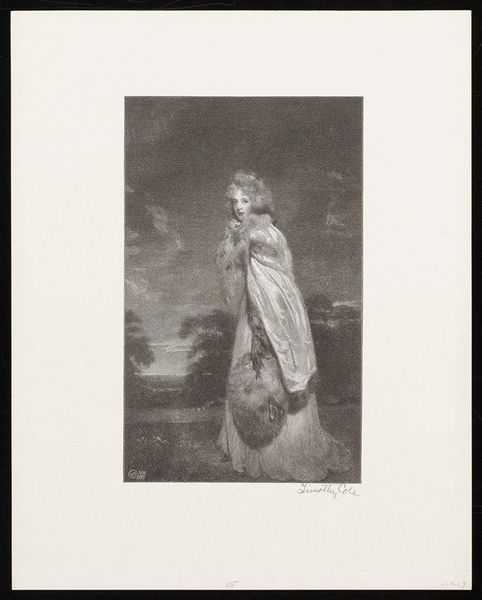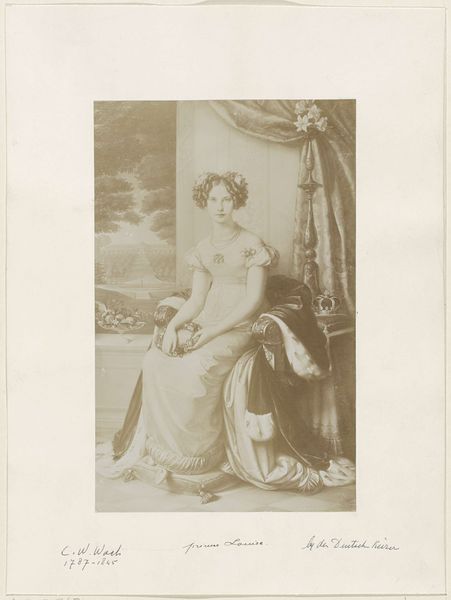
drawing, print, etching, pencil, woodcut, wood-engraving, engraving
#
portrait
#
drawing
# print
#
etching
#
pencil sketch
#
pencil drawing
#
pencil
#
woodcut
#
united-states
#
academic-art
#
wood-engraving
#
engraving
Dimensions: 7 1/4 x 5 1/8 in. (18.42 x 13.02 cm) (image)11 3/8 x 9 1/8 in. (28.89 x 23.18 cm) (sheet)
Copyright: No Copyright - United States
Editor: Here we have Timothy Cole's "Mrs. Blair," created around 1911. It’s an engraving, giving the image this wonderful textured, almost smoky quality. The subject’s direct gaze is quite striking, even intimidating. What do you make of this portrait? Curator: It's fascinating to consider this image in relation to the broader context of portraiture at the turn of the century. Before the rise of widespread photography, engravings like this played a crucial role in disseminating images of prominent individuals. Think about how access to someone’s likeness shaped perceptions of power and status. Editor: So, this wasn't just art, but also... media? Almost like a celebrity magazine today? Curator: Precisely. Consider who would commission such a work, who could afford it, and where it would circulate. The sitter’s clothing and bearing, meticulously rendered by Cole’s engraving, send particular social messages. How would its presence in a private collection versus a public exhibition affect those messages? Editor: That’s a really interesting point. I hadn’t thought about the social life of the image itself. Would this kind of detailed portrait, being a reproductive print rather than a painting, perhaps make the sitter's image more widely available to those outside her social circle? Curator: Indeed. Engravings like this allowed for a wider, though still relatively limited, audience to engage with Mrs. Blair's image. However, it's also important to think about the artistry involved. Cole wasn't simply copying; he was interpreting. How might his artistic choices be shaping the perception of Mrs. Blair? Editor: I guess the artist then has a lot of power in shaping public perception of the sitter, by emphasizing some features and playing down others. I’ll definitely think about these engravings differently now – not just as art, but as part of a bigger cultural conversation. Curator: Exactly! And recognizing art as participating in culture means realizing how our relationship with art always shifts.
Comments
No comments
Be the first to comment and join the conversation on the ultimate creative platform.



